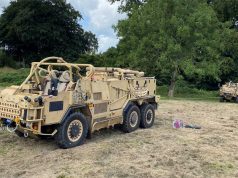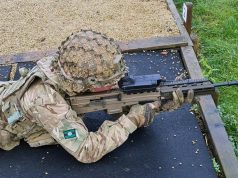After releasing the Integrated Review earlier this year, the UK defense ministry has now released the “Future Soldier” plan that outlines the most radical transformation of the British Army in decades.
The transformation will be bolstered by an additional investment of £8.6 billion in Army equipment over the next ten years, bringing the total equipment investment to £41.3 billion for that period.
Alongside investment in people, infrastructure, emerging technologies, and cyber capabilities, Future Soldier will position the Army as a globally engaged fighting force that benefits the whole of our Union.
“Future Soldier is reinforced by the ambition outlined in the Defence Command Paper to transform the Army into a more agile, integrated, lethal, expeditionary force,” UK defense secretary Ben Wallace said.
“We have underpinned this generational work with an extra £8.6bn for Army equipment, bringing the total investment to £41.3bn.”
“Future Soldier is the next evolutionary step for the British Army; the most radical change for the British Army in 20 years. It will mean changes to the way we operate our structure, technology, and workforce,” Commander Field Army Lt Gen Ralph Wooddisse said.
Ranger Regiment
One of the most significant changes is the creation of a new Ranger Regiment. Standing up from December 1, 2022, the Regiment will embody the Army’s new expeditionary posture. It will form part of the newly established Army Special Operations Brigade and will be routinely deployed alongside partner forces around the world to counter extremist organizations and hostile state threats.
This shift to a globally engaged posture will mean more personnel are deployed for more of the time, with a new network of Land Regional Hubs based on existing training locations in places such as Oman and Kenya.
The Ranger Regiment’s cap badge will take its inspiration from the Peregrine Falcon and everyone will wear a metal badge, irrespective of rank.
Modernised Warfighting
Another key pillar of Future Soldier is ensuring the Army is a central contributor to NATO warfighting by delivering a fully modernised warfighting division by 2030, with capabilities designed to detect and defeat at greater range and accuracy.
New equipment such as Ajax, Boxer, Challenger 3, AH-64E Apache, long range precision fires and un-crewed aerial systems will be introduced, while much of the fighting force will fall under new Brigade Combat Teams.
To ensure land forces adapt at a rapid pace to challenge future threats, a new Experimentation and Trials Group will be established in 2022, leading on trialing new technologies and integrating them into how soldiers will fight and operate.
Creating an Army fit for the future will see some restructuring and reorganization of units over the next four years, which will be supported by a rebalancing of personnel across the United Kingdom. The Regular Army will stand at 73,000 strong by 2025 and combined with an Army Reserve of 30,000, the British Army will stand at over 100,000.
The proportion of the Army based in Wales, Scotland and Northern Ireland will be sustained or increased by 2025, and this will be reinforced by around £3.35 billion from the Defence Estate Optimisation budget and a further £1.2 billion of Army investment in remaining sites.
The entire Future Soldier document is available here



























